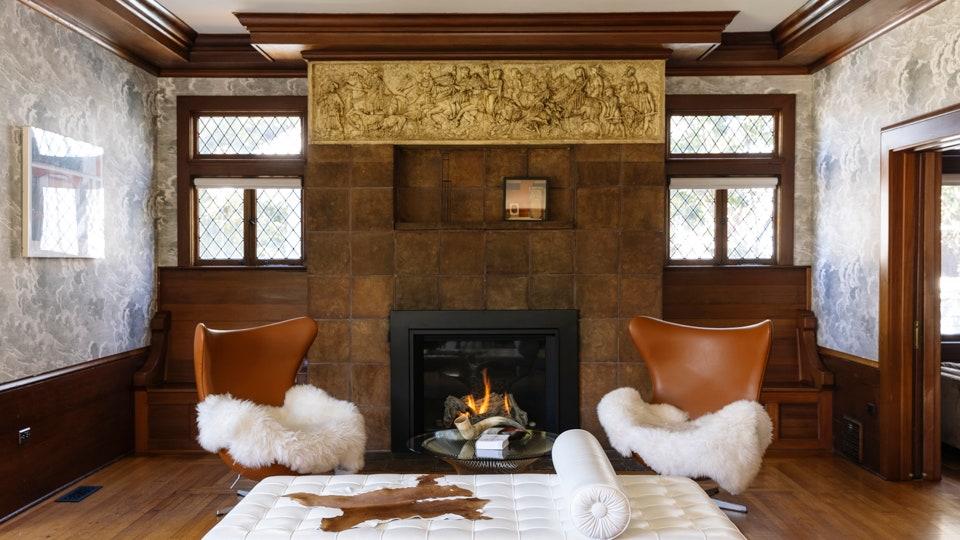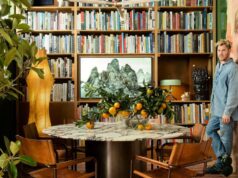Last July, as much of New York City life moved outdoors and into the streets, architect and urban planner Vishaan Chakrabarti, along with his Manhattan firm Practice for Architecture and Urbanism (PAU), unveiled a proposal in The New York Times: Banish most privately-owned cars from Manhattan. Interestingly, that same month, he and his family were moving to what most people would consider a car place: Berkeley, California. There, Chakrabarti would serve as the new dean of U.C. Berkeley’s College of Environmental Design.
“We didn’t want to suddenly have a car,” Chakrabarti says. He and his wife Maria Alataris, also an architect and founder of maa designs, have lived in Manhattan for 30 years and now have two teenage kids. “We’re not used to driving to get a quart of milk, or to drop a kid off at school. It’s just not the way we live.” So they landed in Elmwood, an old residential neighborhood just a twenty minute walk from the Dean’s Office at Berkeley, pretty close to their daughters’ school, and near a local BART station for easy access to San Francisco.
A vibrant, Sol LeWitt linocut hangs in the gracious, wood-clad entryway.
Alataris and Chakrabarti, who met as young, dressed-in-black architects in the offices of Skidmore, Owings & Merrill, have lived in the sorts of places you would expect—a string of slick, city apartments; a cottage on Long Island, all filled with pieces by the likes of Mies, Eames, and Saarinen. But in Berkeley, they settled into something less expected: a historic property, originally built in the 1920s by architect Walter Ratcliff for an environmentalist of a different stripe—John Jolly Cairns, the father of modern, in-ground irrigation (“Ironic, isn’t it?” Chakrabarti quips. Since they moved in, Alataris has been researching drought-resistance plants.) Thanks to its carved redwood paneling and elaborate eaves, Chakrabarti affectionately deems the place’s unique style “Beaux Arts and Crafts,” for its arts and crafts detailing paired with a more gracious, free-flowing floor plan. Eerily relevant, even, was a room they believe to be a sleeping porch—the house was completed just after the Spanish Flu—which the family has converted into a gym.
Ever conscious of their carbon footprint (the car their new life requires from time to time, mostly for roadtrips, is a Tesla), Chakrabarti and Alataris set to work making the home as self-sustaining as they could: a solar array for the large, south- and west-facing roof; converting heating and air conditioning to an electric pump. Thankfully, the house gets so much natural light they rarely flip the light switches before nightfall. “The only fossil fuels the house uses are gas for cooking and the fireplaces,” Chakrabarti says. Original windows were kept intact, and kitchens and bathrooms—last renovated in the 1980s—were all revamped with the help of local contractors MN Builders.
Buy now for unlimited access and all of the benefits that only members get to experience.
“Vishaan is a big picture person and I’m a details person,” says Alataris, who took the lead on the interiors, giving their furniture and art collection—assembled over the years—a fresh twist. She’d always wanted wallpaper, so she covered a few rooms with surreal Fornasetti patterns that could stand up to the house’s own ornate detailing. The $25 bar cart they snagged at the flea market is filled with Steuben and Baccarat crystal which Chakrabarti, ever the bartender, hopes to put to use once they can finally entertain again. One of their investments was a new dining table and chairs to (hopefully soon) accommodate guests. “Shockingly, we didn’t have a dinner table for fourteen in Manhattan,” he jokes.
Working with Alataris on their new place has prompted Chakrabarti to think more deeply about home building. “I came into architecture thinking about cities,” he says. Chakrabarti ran the Manhattan Office of City Planning after 9/11, pushing through projects like the High Line and the restoration of the street grid at the World Trade Center site. Since founding PAU, he’s proposed the adaptive reuse of the Domino Sugar Factory in Brooklyn and the development of Sunnyside Yard, a swath of highway-adjacent land in Queens. But on the other side of the country, where residential structures by the likes of Charles and Ray Eames, Frank Lloyd Wright, or Rudolph Schindler are in constant dialogue with their environment—often a tug of war, as they’re threatened by fire, drought, earthquake, and erosion, he’s noticed something: “Out here there’s an understanding that the built environment really needs to change.”










